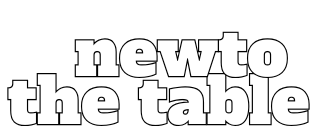Inflation’s got everyone feeling like they’re stuck in a never-ending game of musical chairs, and when the music stops, renting can feel like the last seat at a crowded table. With prices soaring faster than a cat on a hot tin roof, navigating the rental market can seem daunting. But don’t fret—there’s a way to thrive even when the economy’s throwing curveballs.
Table of Contents
ToggleUnderstanding Inflation and Its Impact on Renting
Inflation affects the overall economy, influencing various sectors, including housing. Understanding its nuances is essential for renters navigating these challenging times.
What Is Inflation?
Inflation refers to the general increase in prices for goods and services over time. Measured by the Consumer Price Index, a rise indicates that purchasing power decreases. In recent years, central banks have noted significant inflation, prompting policy changes to mitigate its effects. Common causes include increased demand, rising production costs, and expansive monetary policy. Renters often feel the squeeze as wages lag behind the escalating cost of living.
How Inflation Affects Rental Prices
Rental prices tend to rise during periods of inflation. Increased construction costs influence landlords to hike rents to maintain profitability. Supply chain disruptions also exacerbate housing shortages, pushing prices higher. Economic uncertainty drives demand for rental properties, leading tenants to face stiff competition. Market dynamics, combined with inflation, create a challenging landscape for renters. A tight rental market can limit choices, forcing individuals to compromise on desired amenities or locations. Tracking local trends helps renters make informed decisions amid fluctuating prices.
The Current Rental Market Landscape
The rental market faces significant shifts amid inflation. Understanding trends and regional variations helps renters navigate this environment effectively.
Trends in Rental Prices
Rental prices surge in response to inflationary pressures. Nationwide, rents have increased by an average of 14% over the past year. Urban areas experience sharper spikes, sometimes exceeding 20%. Demand factors into these rising costs, as more individuals seek rental housing rather than purchasing property amid economic uncertainty. Competition intensifies, creating a scenario where available rentals disappear quickly. These dynamics prompt renters to act swiftly, given the growing number of applicants per unit. Monitoring these trends provides valuable insight for those looking to secure housing.
Regional Variations in Renting Costs
Renting costs vary significantly across different regions. Coastal cities often display higher rental prices, with averages exceeding $3,000 per month in locations like San Francisco and New York City. Conversely, Midwest cities often maintain more affordable options, with some areas averaging around $1,500. Economic factors contribute to these disparities, including income levels and job opportunities. States with strong job markets typically see higher rental demands, leading to increased prices. Analyzing regional variations assists renters in identifying potential opportunities for more budget-friendly options while adapting to local market conditions.
Strategies for Renting During Inflation
Navigating the rental market during inflation requires strategic approaches. Renters can implement various tactics to mitigate rising costs while still securing suitable housing.
Negotiating Rent with Landlords
Initiating negotiations can set the stage for better rental terms. Renters should research comparable properties to present strong arguments. Highlighting long-term tenancy intentions may appeal to landlords seeking stability. Expressing flexibility regarding move-in dates or lease length can strengthen negotiations. Discussing potential improvements or maintenance needs may also entice landlords to reduce monthly rent. Successful negotiations often depend on clear communication and preparation.
Finding Affordable Rentals
Exploring different neighborhoods can uncover more affordable options. Local listings and online rental platforms offer valuable insights into regional price variations. Engaging with community boards or social media groups often reveals hidden gems and private listings. Budgeting realistically based on personal finances helps maintain focus during the search. Prioritizing essential features, such as proximity to work or public transport, guides decision-making. Visiting properties in person can provide a better understanding of their value and condition.
The Benefits and Risks of Renting During Inflation
Renting during inflation presents unique advantages and challenges in the current economic climate. Understanding these dynamics can help renters make informed decisions.
Advantages of Renting in an Inflationary Economy
Renters gain flexibility while navigating rising costs. Short-term lease options allow for easier relocation if prices continue to escalate. Landlords often absorb costs associated with maintenance and repairs, freeing tenants from these financial burdens. Renting also protects individuals from fluctuating property values, avoiding the risk of depreciation in home investments. In urban areas where rental demand is high, individuals may discover that renting offers access to amenities without the hefty mortgage commitments. Moreover, leasing can provide immediate access to housing without the lengthy purchasing process, crucial during times of economic uncertainty.
Potential Downsides to Consider
While renting appears beneficial, rising inflation leads to increased rental prices, elevating monthly expenses. Lease renewals may bring significant rent hikes, creating unanticipated financial strain. Individuals who prioritize stability might find short-term rentals unsettling, especially in competitive markets with fast-moving listings. Renters in high-demand regions face bidding wars that can drive prices beyond initial budgets. Disparities between regions create unequal opportunities; some may struggle to find affordable rentals amid escalating prices. Ultimately, staying aware of local market trends becomes vital for making prudent financial decisions.
Navigating the rental market during inflation presents unique challenges that require strategic thinking and adaptability. With rising prices and increased competition, renters must stay informed about local trends and be proactive in their search. By employing tactics such as negotiating with landlords and exploring various neighborhoods, individuals can find more affordable options.
Flexibility remains a key advantage of renting, allowing tenants to adjust to changing economic conditions. While the pressures of inflation can strain budgets, a well-planned approach can lead to successful renting experiences. Staying vigilant and informed will empower renters to make sound decisions in this evolving landscape.








